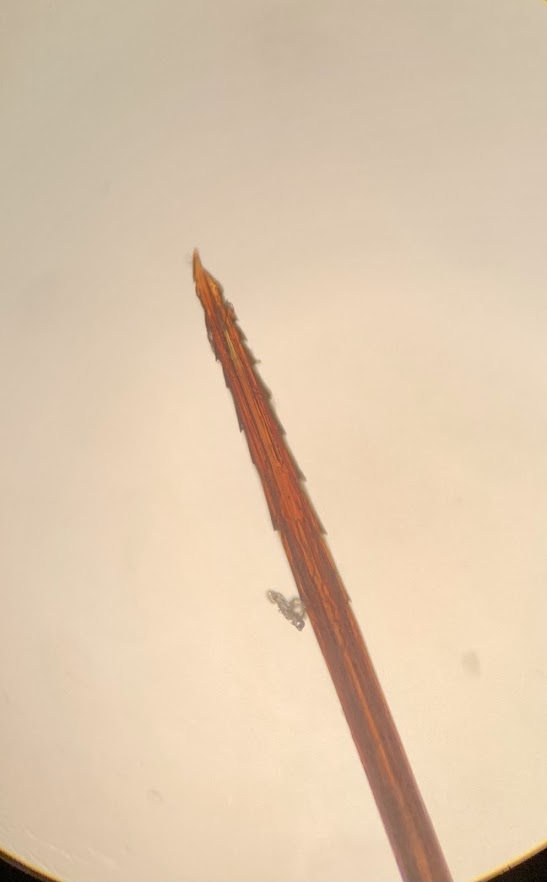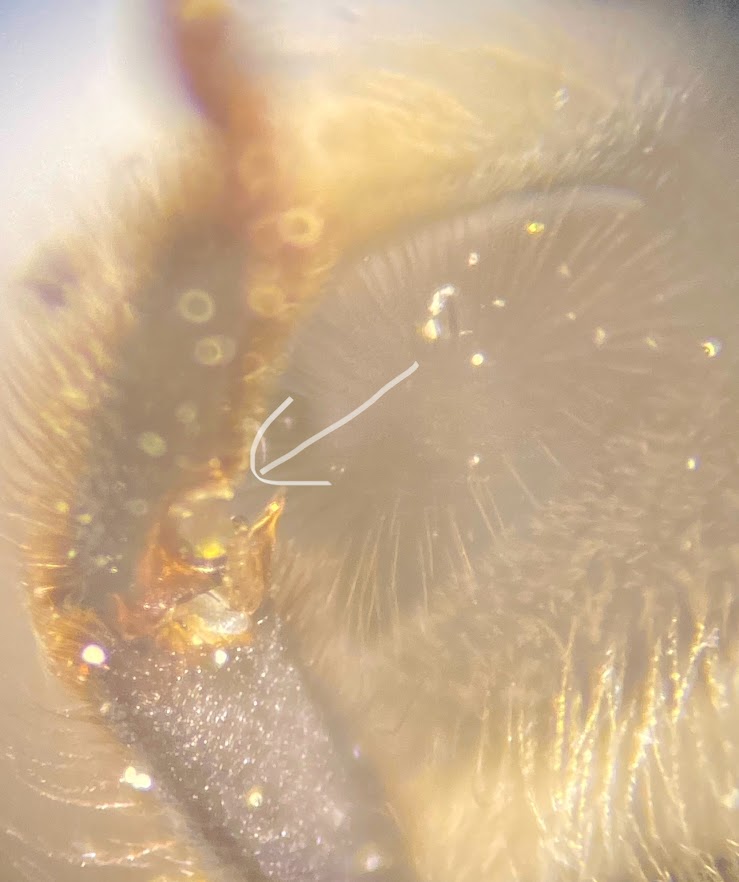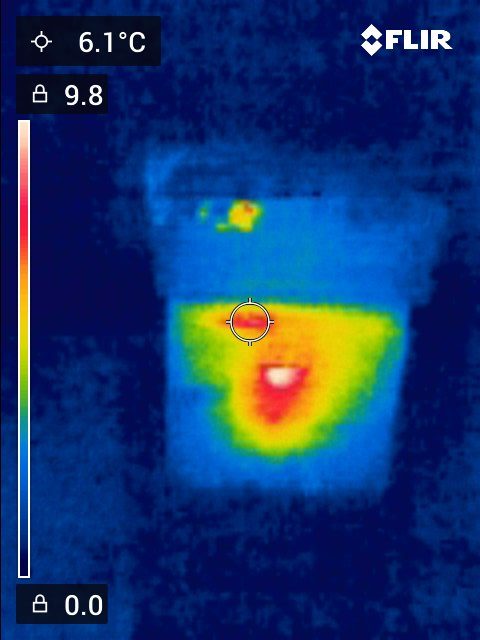Bee bits and pieces
A bit of a random page that I add to occasionally with photos from a microscope – the fascinating world of Honey Bee Anatomy.
All images (c) Read Apiaries (even if they are of variable quality!)

Magnified 400x, the pointy painful end of a honey bee – the stinger. Technically this is the shaft section of the sting apparatus – the bit that goes into you if you’re stung. The shaft actually consists of three separate pointed structures, with a canal down the middle along which the venom is pumped, you can just see the canal in the photo. You can also see a set of backward pointing barbs. In tough skin like ours it’s why the bee can’t pull it’s stinger back out.

Ever wondered how a honeybee cleans its antennae? No probably not. Well, they use a special notch and comb on their front (fore) legs which, combined with a downward pointing hard flap (called a fibula), the bee draws its antenna through to clean it. If you watch a honeybee closely (easy if you’re a beekeeper!) you will often see a bee cleaning it’s antenna with it’s fore legs, particularly if it’s just got covered in something. You can see this antenna cleaning apparatus in the photo (arrowed).

Beehive at night. External temperature was -1C. On this thermal image of one of my wooden hives you can clearly see the location of the colony cluster due to the slightly elevated heat signature coming through the wood sides of the hive (honeybees will maintain the core cluster at 20C – and this will rise to 36C once raising brood starts, which will be any day now. It takes alot of energy and hence food to keep this warm in the winter!). The cluster is central in the brood box and not all at the top, a good sign. a) the bees are clearly alive, and b) they are not all at the top which could indicate a lack of food supply.
